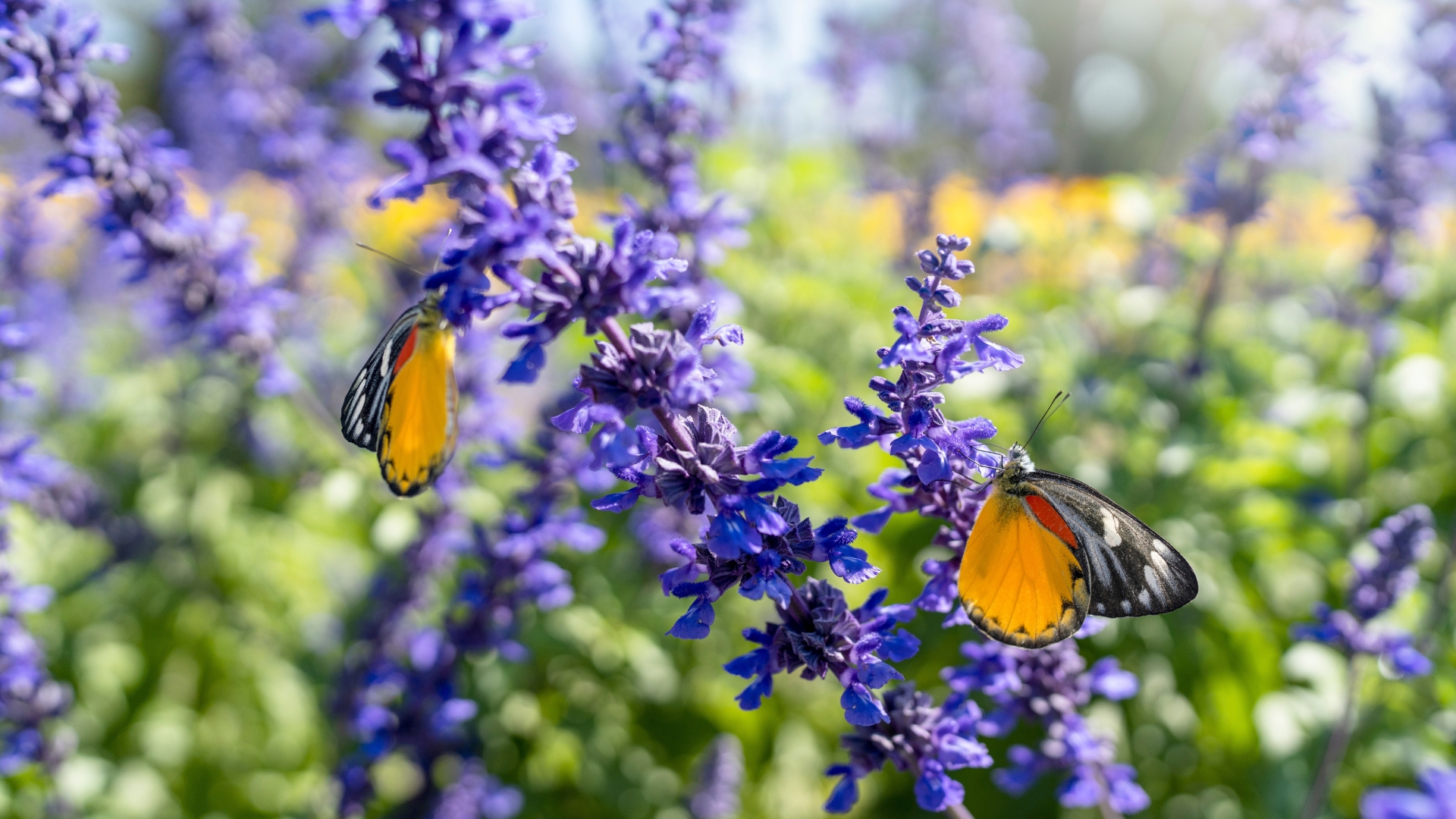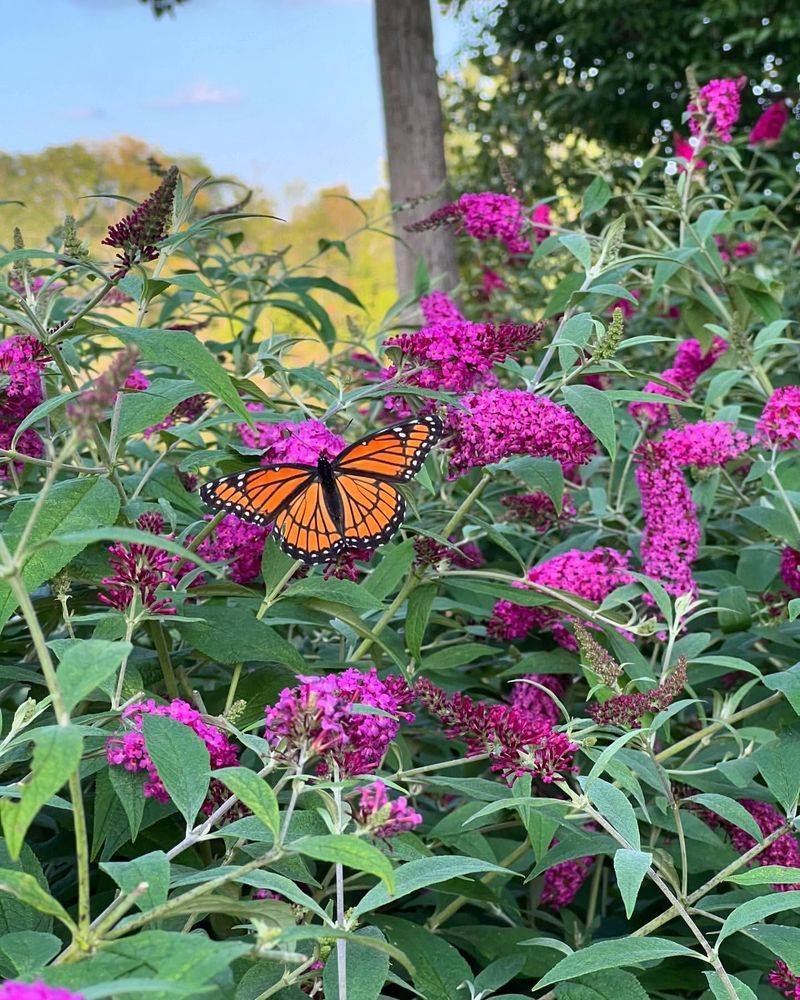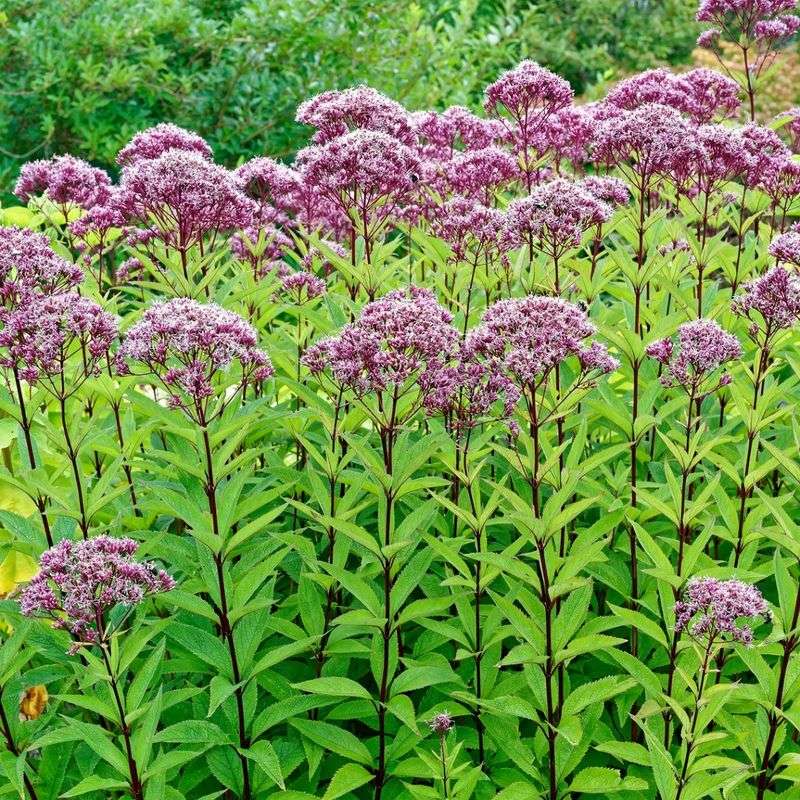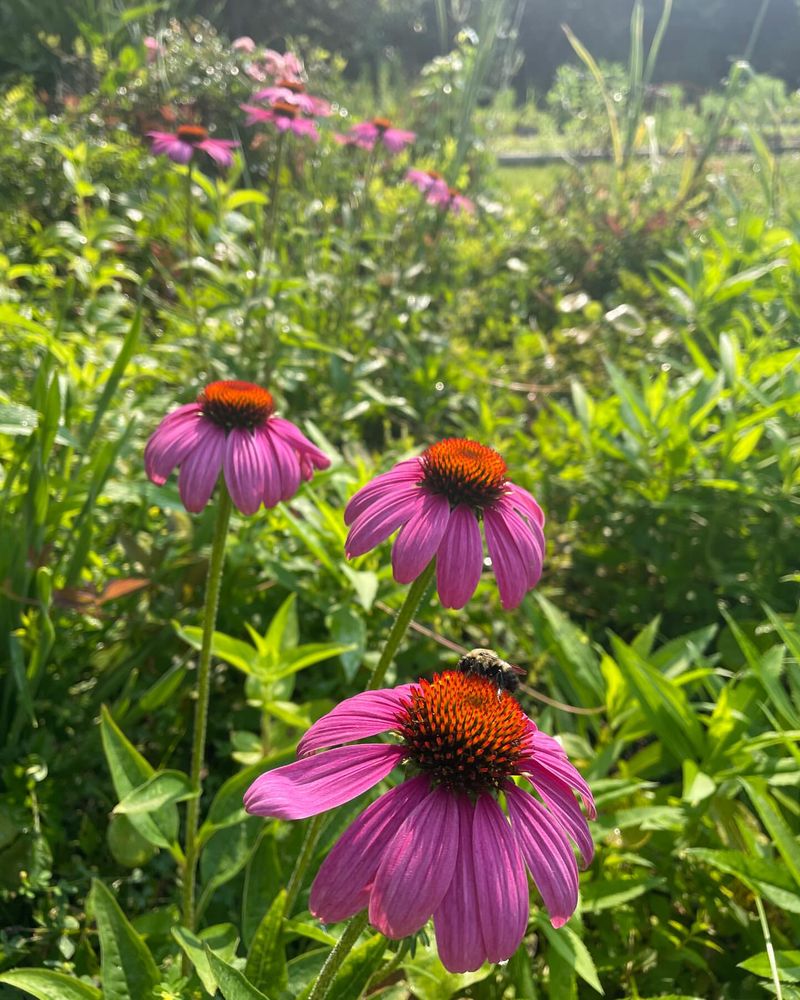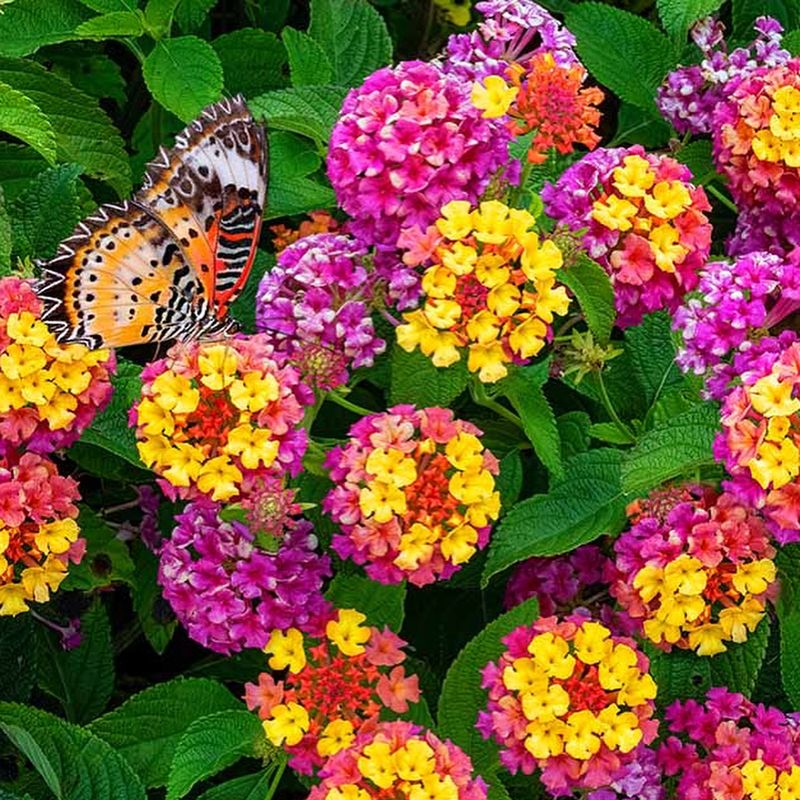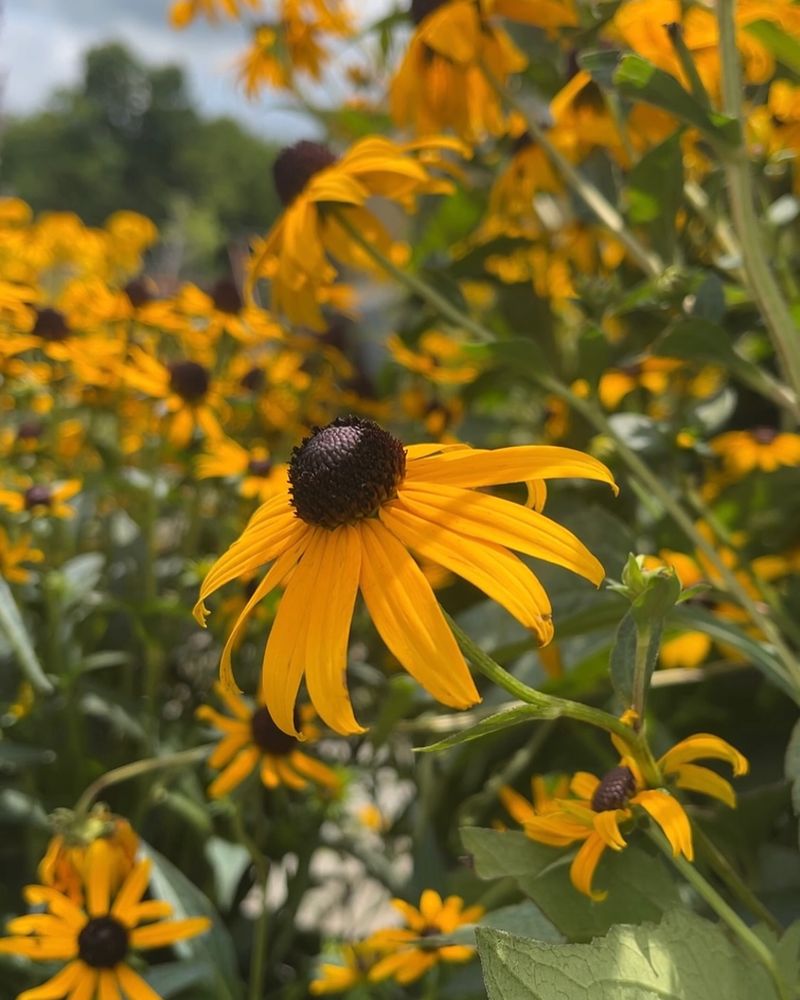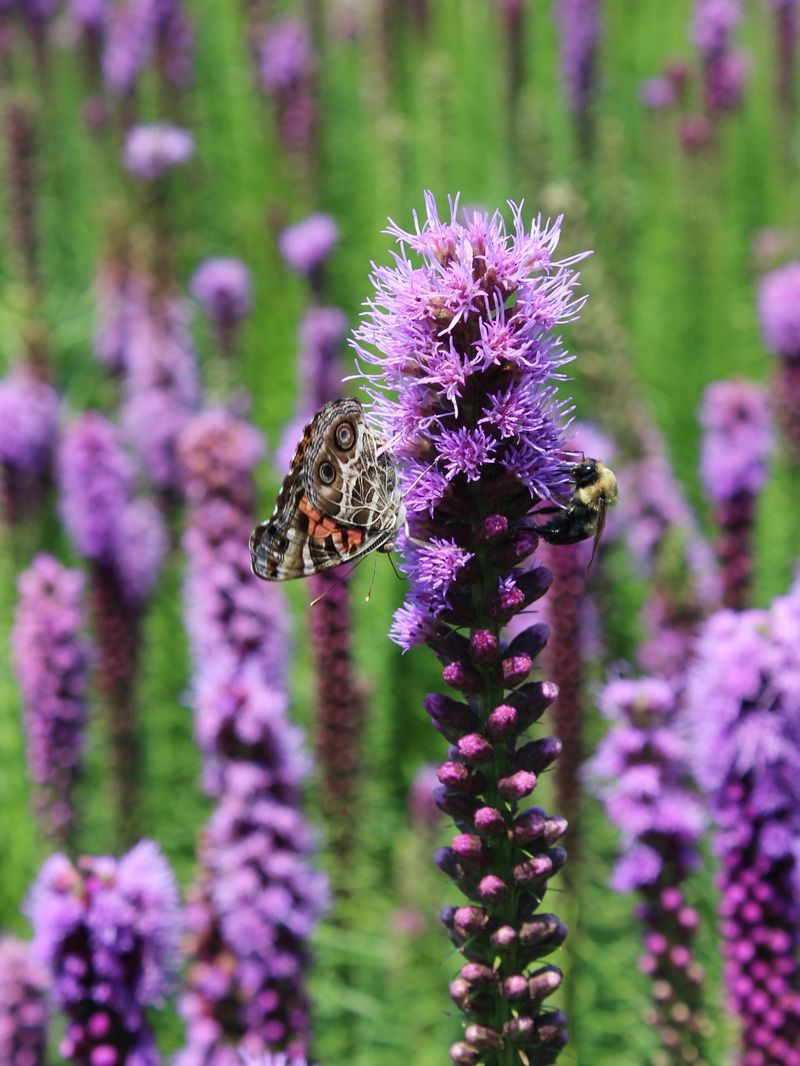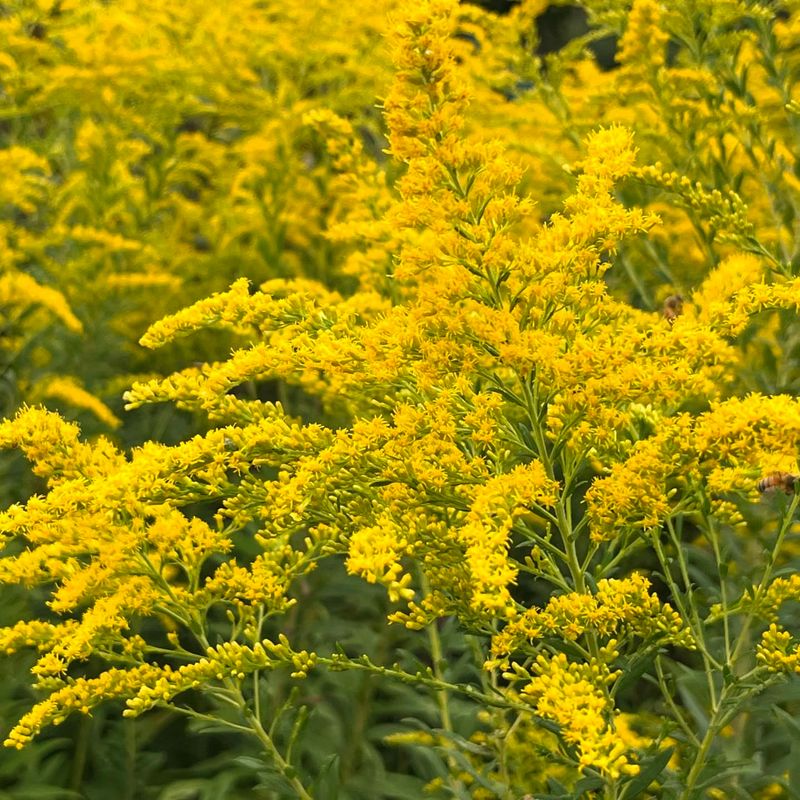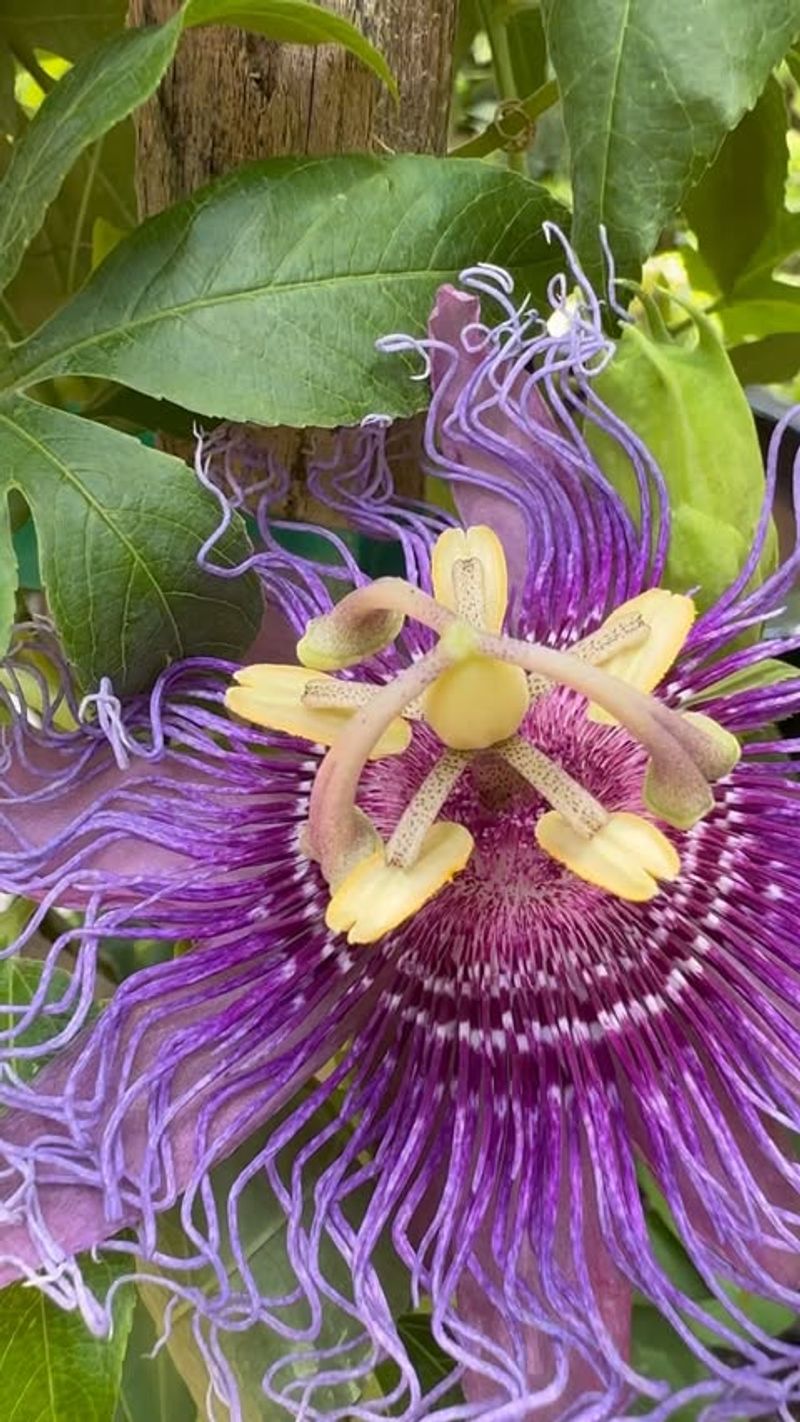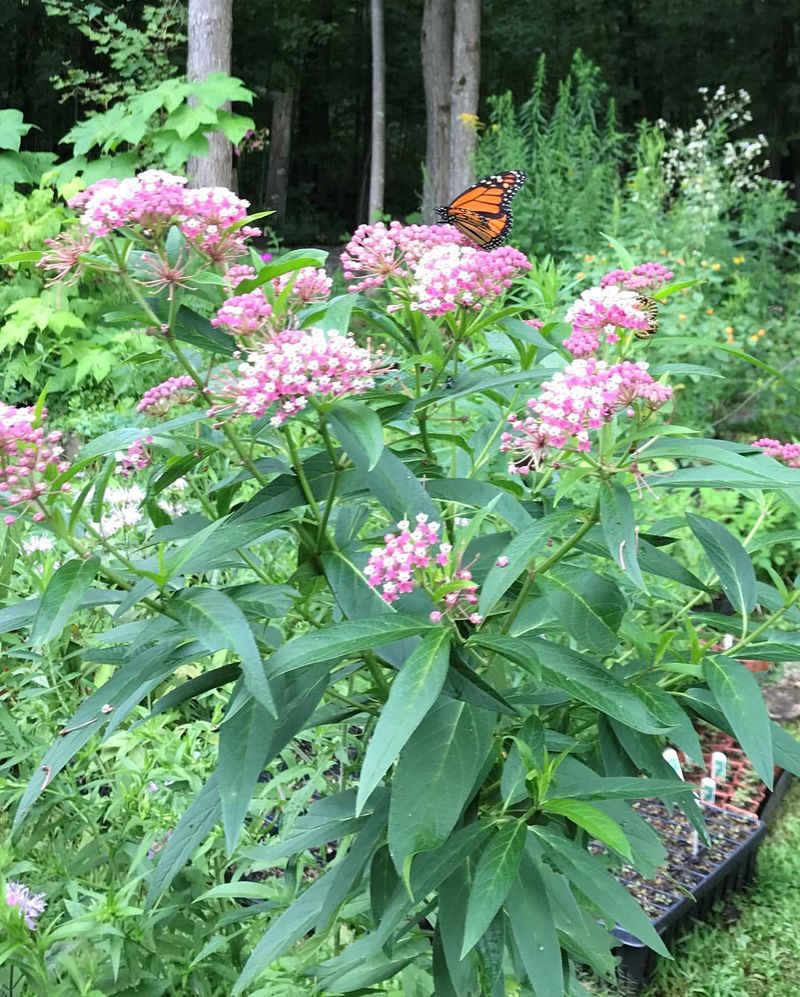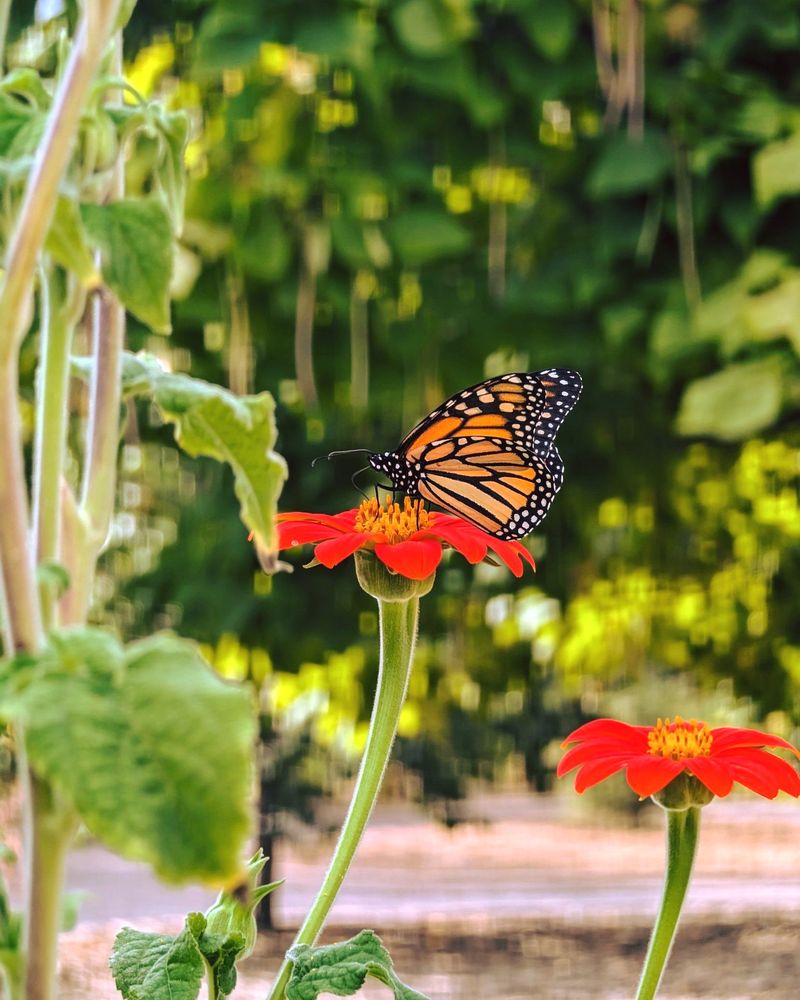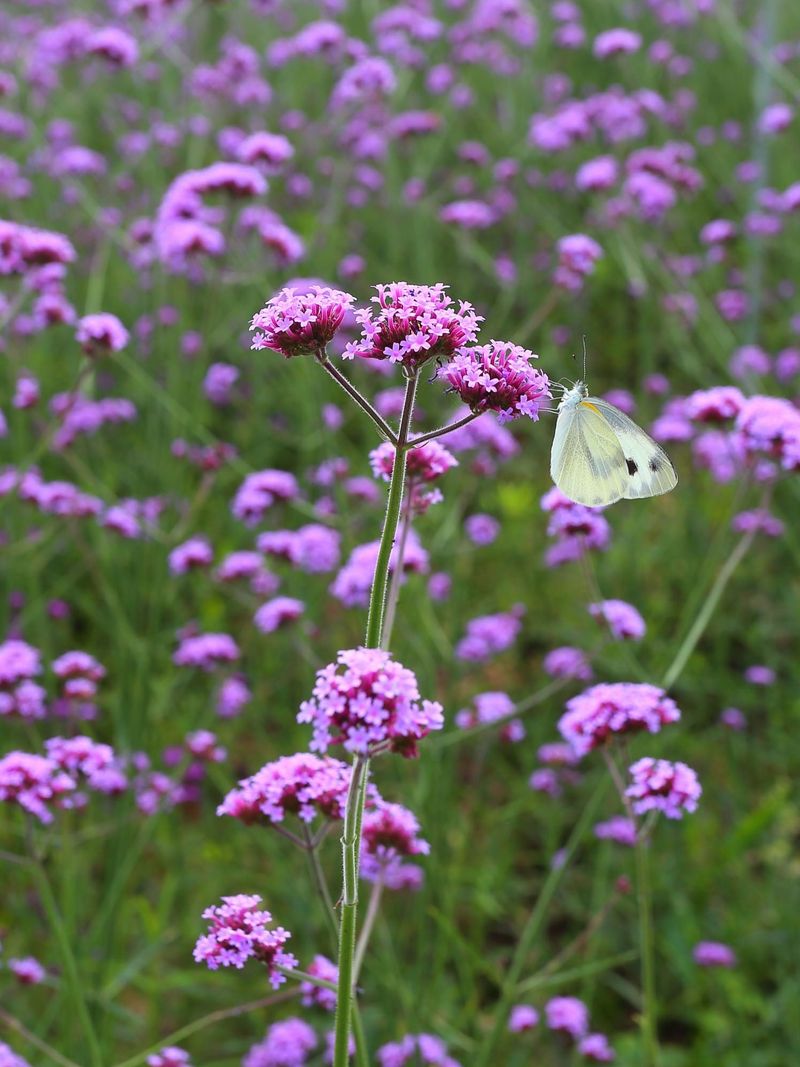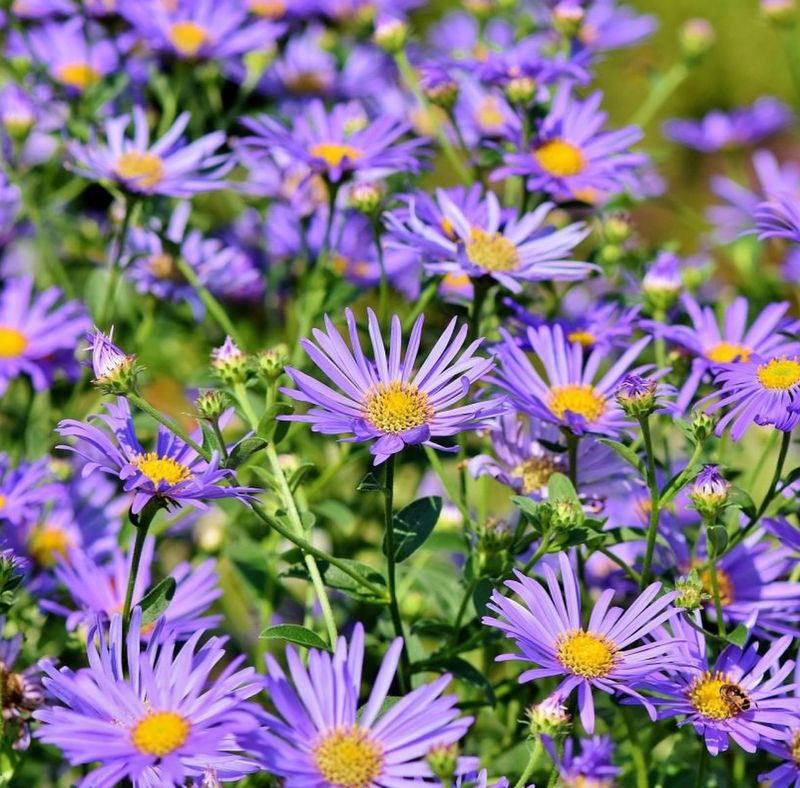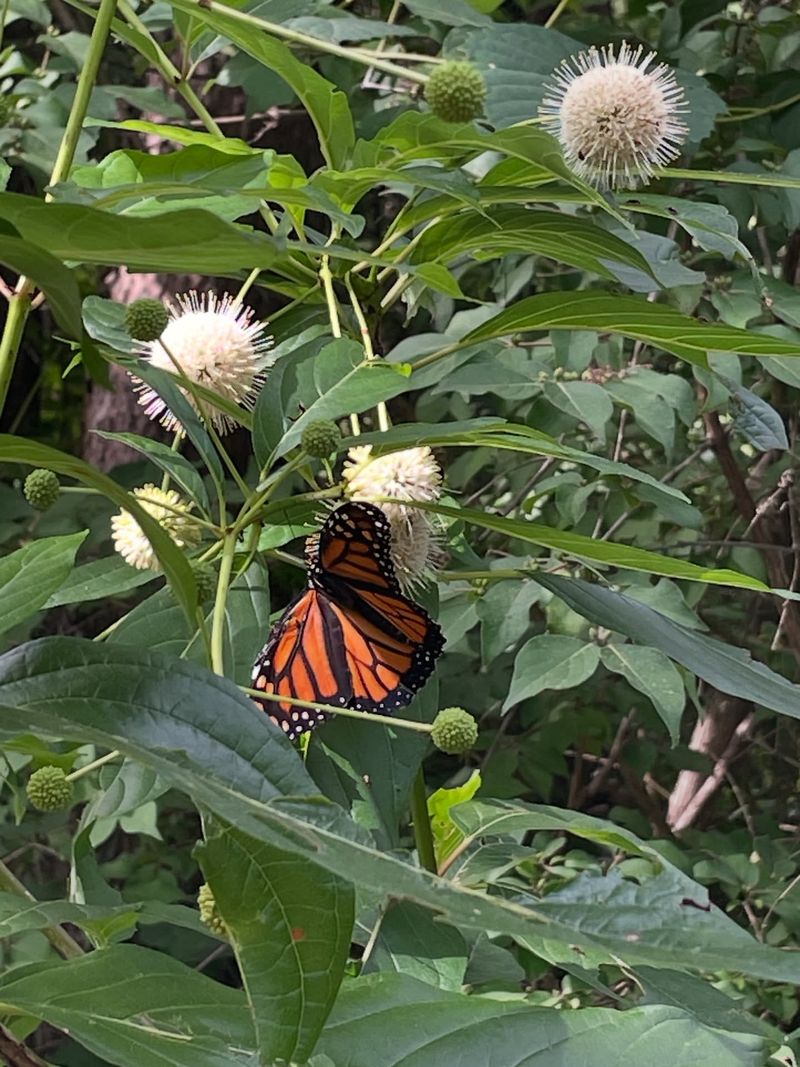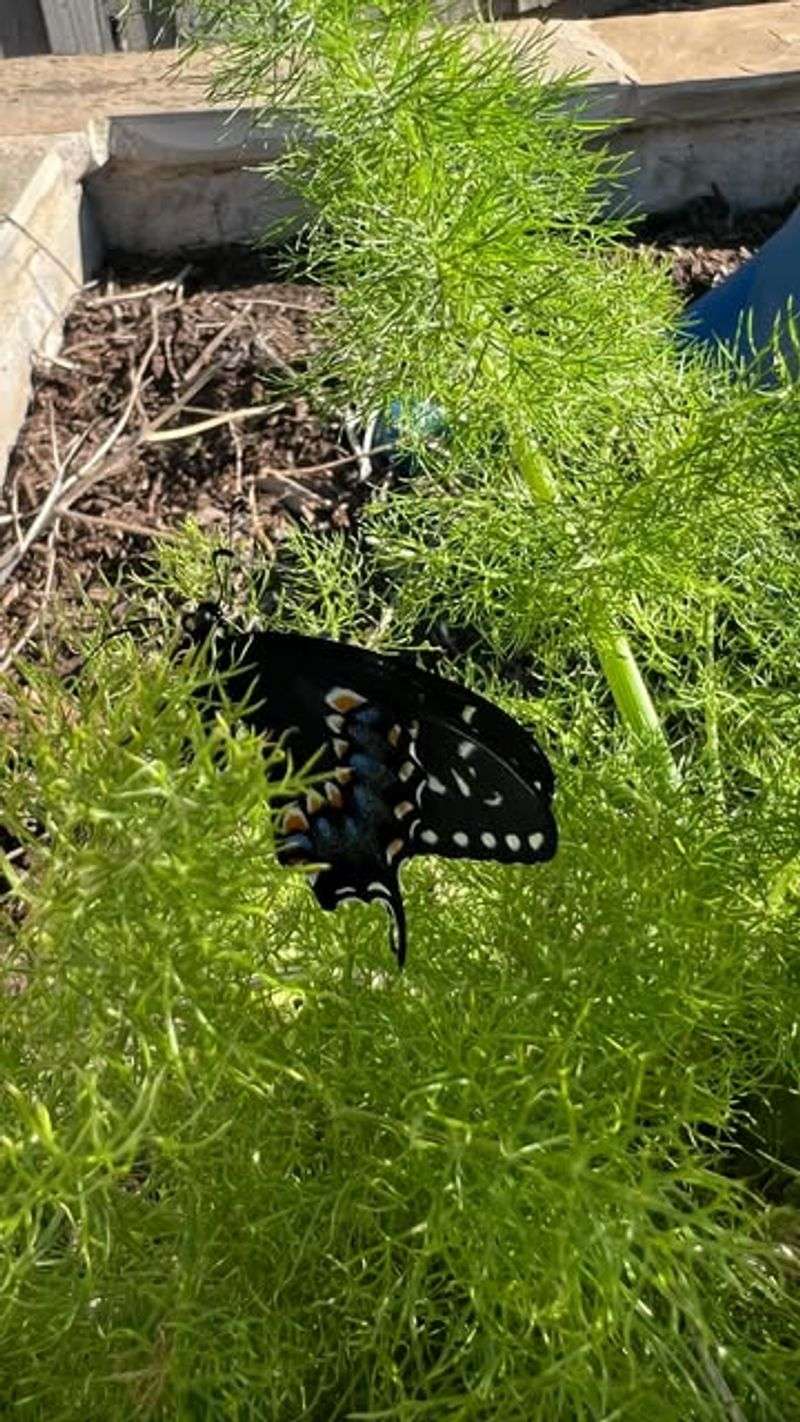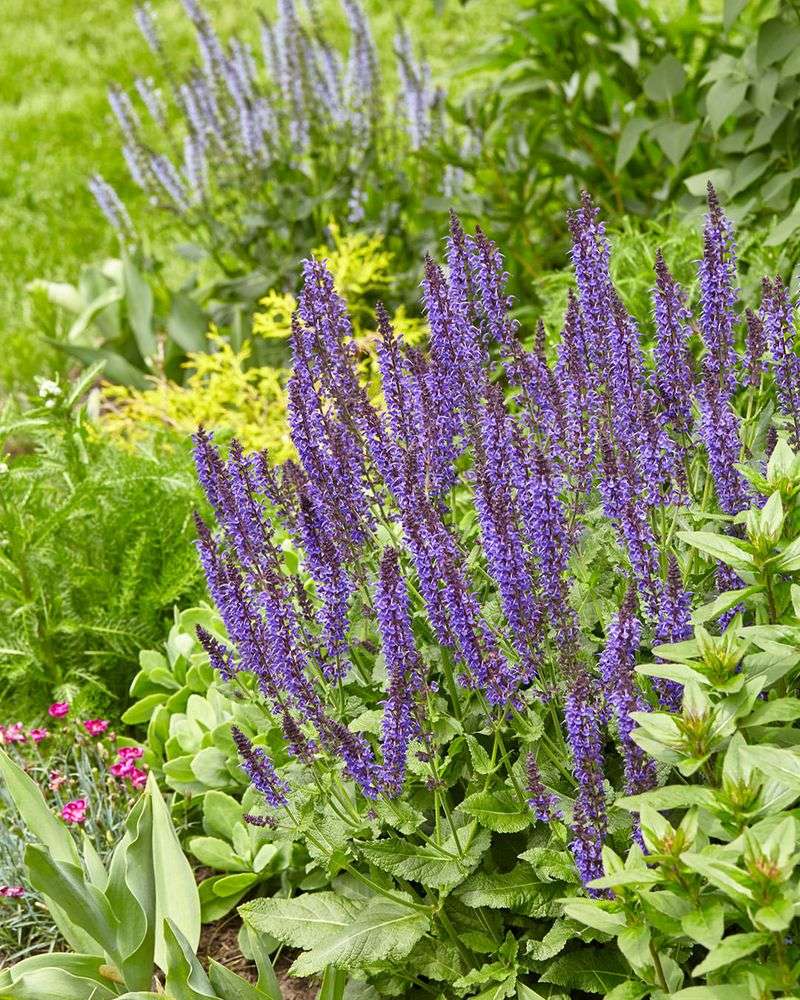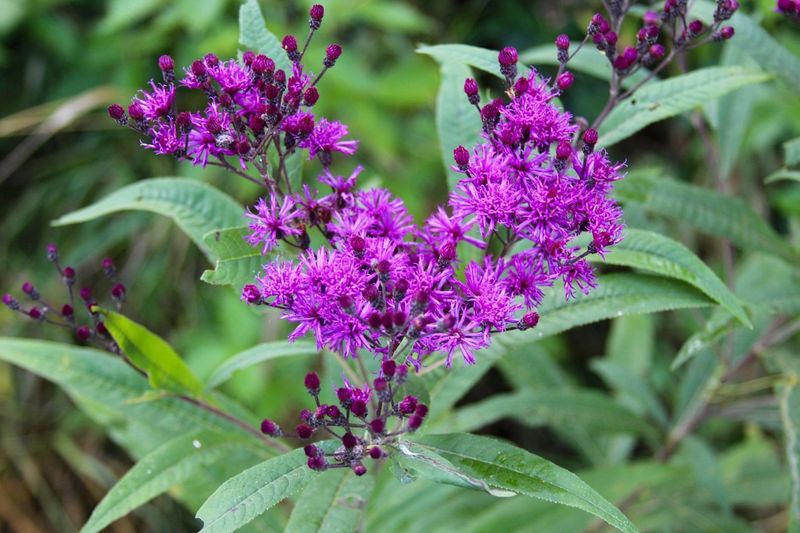My garden in August felt a little too quiet—until I started planting a few butterfly favorites. In Alabama, some plants are absolute magnets for these fluttery visitors this time of year.
I’ve watched my yard come alive with movement just by adding a couple of late-summer bloomers. It’s such a simple way to bring in color, life, and pollinators all at once.
If you want to see more butterflies this month, these plants won’t disappoint.
1. Butterfly Bush
The sweet fragrance fills Alabama gardens and acts like a butterfly magnet in the August heat. These cone-shaped flower clusters come in purple, pink, and white varieties that butterflies simply can’t resist.
Many Alabama gardeners plant them near patios to enjoy the butterfly show up close. The shrub thrives in our hot southern climate and requires minimal care once established.
2. Joe-Pye Weed
Standing tall in Alabama meadows, this native perennial puts on a spectacular show with its mauve flower clusters. Butterflies flock to the nectar-rich blooms while the plant’s height creates a dramatic backdrop in garden settings.
Despite its name, there’s nothing weedy about this elegant plant. Throughout Alabama, gardeners appreciate how it attracts monarchs and swallowtails during peak August butterfly season.
3. Coneflower
Vibrant purple petals surround distinctive orange-brown centers that serve as landing pads for hungry butterflies. These drought-tolerant natives handle Alabama’s August heat with remarkable resilience while providing weeks of nectar.
Many Alabama butterfly enthusiasts plant coneflowers in drifts for maximum impact. The seeds later attract goldfinches, giving your garden wildlife appeal well beyond butterfly season.
4. Zinnias
Few annual flowers deliver as much butterfly appeal as these colorful blooms that thrive in Alabama’s summer heat. Their flat, daisy-like flowers provide perfect landing platforms while offering abundant nectar rewards to visiting butterflies.
Across Alabama gardens, zinnias create instant color and butterfly attraction. The more you cut these flowers for bouquets, the more they’ll produce – making them perfect for both garden display and indoor enjoyment.
5. Lantana
Heat-loving and drought-resistant, lantana produces clusters of tiny flowers in a rainbow of colors that butterflies find irresistible. The plant’s ability to bloom continuously through Alabama’s hottest months makes it especially valuable for August butterfly gardens.
Many Alabama homeowners use lantana in containers or as ground cover in challenging spots. Its slightly citrusy scent helps repel mosquitoes while its nectar attracts beneficial pollinators.
6. Black-eyed Susan
Golden petals with dark centers create a beacon for butterflies in Alabama gardens from mid-summer through fall. These native wildflowers establish easily and spread gradually, creating more butterfly habitat each year.
Many Alabama gardeners pair them with purple coneflowers for a classic wildflower look. Their drought tolerance makes them perfect for hot August gardens when butterfly populations peak across the state.
7. Blazing Star
Tall purple spikes rise dramatically above Alabama meadow gardens, creating irresistible butterfly feeding stations. These native plants thrive in our hot climate and poor soils while providing essential nectar for migrating monarchs preparing for their journey south.
Many Alabama butterfly enthusiasts consider blazing star essential for August gardens. The unusual vertical flower structure adds architectural interest while supporting numerous butterfly species during the late summer peak.
8. Goldenrod
Often mistakenly blamed for allergies, this golden-flowering native is actually a butterfly superhero in Alabama gardens. The abundant tiny flowers provide essential late-summer nectar when many other plants have finished blooming.
Across Alabama’s natural areas, goldenrod supports countless butterfly species. The compact garden varieties behave well without the aggressive spreading of their wild cousins.
9. Passionflower
With exotic-looking blooms that seem almost otherworldly, this Alabama native serves a dual purpose in butterfly gardens. The unusual flowers provide nectar for adult butterflies while the leaves feed Gulf fritillary caterpillars.
Many Alabama butterfly gardeners plant passionflower along fences where it can climb. The spectacular purple flowers are a conversation starter, while the edible fruits add another dimension of garden enjoyment.
10. Milkweed
No Alabama butterfly garden is complete without milkweed – the essential host plant for monarch butterflies. The pink or orange flower clusters provide nectar for adults while the leaves nourish the next generation of caterpillars.
Many Alabama conservationists are planting native milkweed species to support monarch migration. The butterfly-plant relationship is a perfect teaching opportunity for children about ecological connections.
11. Mexican Sunflower
Vibrant orange blooms stand out in Alabama gardens, creating butterfly magnets that produce nectar all through the hottest days of August. The daisy-like flowers on tall stems allow butterflies to feed while staying safe from ground predators.
Many Alabama butterfly enthusiasts consider this annual essential for summer gardens. The fiery color creates spectacular combinations with blue or purple flowers while supporting countless butterfly species.
12. Verbena
Low-growing clusters of tiny flowers in purple, pink or white create butterfly feeding stations close to the ground in Alabama gardens. The plant’s ability to bloom through heat and drought makes it especially valuable for August butterfly attraction.
Many Alabama landscapers use verbena as ground cover or in hanging baskets. The sprawling habit softens garden edges while providing essential nectar during the height of butterfly season.
13. Aster
Star-shaped flowers in shades of purple, pink and white begin blooming in late August across Alabama, extending butterfly season into fall. Their daisy-like form provides perfect landing pads while their abundant nectar feeds late-season visitors.
Many Alabama gardeners appreciate how asters support the final monarch generation preparing to migrate. The compact varieties stay neat in garden settings while still providing essential butterfly resources.
14. Buttonbush
Unusual spherical white flowers resemble pincushions and provide unique architectural interest in Alabama butterfly gardens. The fragrant blooms attract numerous butterfly species while tolerating the wet spots where many other plants struggle.
Many Alabama gardeners with damp areas find buttonbush solves both drainage issues and butterfly attraction. The distinctive round seedheads add winter interest after the butterflies have moved on.
15. Fennel
Feathery foliage topped with yellow flower umbels serves both adult butterflies and caterpillars in Alabama gardens. The anise-scented leaves are the preferred food for black swallowtail caterpillars, while the flowers feed adults of many species.
Many Alabama butterfly enthusiasts plant extra fennel specifically for caterpillars. Watching the transformation from egg to butterfly provides endless fascination through the hot August days.
16. Salvia
Tubular flowers in shades of red, purple and blue attract butterflies all summer long in Alabama gardens. The plant’s drought tolerance and continuous bloom make it especially valuable during August’s peak butterfly activity.
Many Alabama gardeners mix different salvia varieties for extended season interest. The vertical flower spikes add height to garden compositions while providing essential nectar for numerous butterfly species.
17. Ironweed
Towering purple flower clusters create dramatic vertical elements in Alabama butterfly gardens during late summer. This native perennial handles poor soil and drought conditions while providing abundant nectar for numerous butterfly species.
Many Alabama gardeners use ironweed at the back of borders for height and butterfly attraction. The rich purple color creates stunning combinations with yellow flowers while supporting local ecology.

